In recent years, the kitchen appliance industry has witnessed a surge in innovation and consumer demand. As households increasingly prioritize convenience, efficiency, and safety in their kitchen spaces, the demand for certified commercial units has grown. Among the certifications that stand out is the ETL listing, which has gained recognition for its stringent quality standards and consumer trust. This article delves into the dynamics of the ETL certified kitchen appliance market, exploring current trends, consumer preferences, market drivers, innovation, case studies, regulatory implications, and future predictions.
Introduction to ETL Listed Commercial Units in the European and American Kitchen Appliance Markets
In the bustling landscapes of Europe and the United States, the kitchen appliance market has become a vibrant hub of innovation and consumer demand. At the heart of this dynamic sector are ETL listed commercial units, which have gained significant traction for their quality, safety, and reliability. Let’s delve into the intricacies of these units and their impact on the European and American markets.
The European kitchen appliance market is characterized by a diverse array of products, from sleek, modern ovens to energy-efficient dishwashers. American consumers, on the other hand, are known for their preference for high-tech, user-friendly appliances that combine functionality with style. ETL listed commercial units stand out in both regions due to their adherence to stringent safety and performance standards.
In Europe, the demand for ETL listed commercial units has been on the rise, driven by an increasing awareness of product safety and environmental sustainability. As consumers become more educated about the importance of certifications, they are more likely to choose appliances that bear the ETL mark. This trend is echoed in the American market, where the ETL certification is often seen as a seal of approval for top-notch appliances.
The ETL listing process involves a thorough evaluation of the kitchen appliances, including rigorous testing for electrical, mechanical, and safety aspects. This ensures that ETL listed units meet or exceed the industry standards set by regulatory bodies in both Europe and the USA. The certification process is not just about compliance; it’s about fostering trust and confidence among consumers.
One of the key factors that set ETL listed commercial units apart is their focus on energy efficiency. In a world where environmental concerns are paramount, appliances that are ETL certified are often designed with eco-friendly features, such as energy-saving modes and recyclable materials. This not only appeals to environmentally conscious consumers but also helps businesses reduce their operational costs in the long run.
In the European market, the ETL certification is particularly valuable for manufacturers looking to expand their reach into the German and French markets, where safety standards are particularly high. Similarly, in the United States, the certification is a key differentiator for appliances targeting the commercial sector, such as those found in restaurants, hotels, and healthcare facilities.
The design of ETL listed commercial units also reflects the evolving tastes and needs of consumers. In Europe, there is a growing trend towards smart appliances that can be controlled remotely, offering convenience and connectivity. American consumers, on the other hand, are fascinated by appliances that integrate seamlessly with smart home systems, providing a cohesive and efficient kitchen environment.
As the kitchen appliance market continues to evolve, manufacturers are investing heavily in research and development to create innovative ETL listed products. This includes advancements in cooking technology, such as induction cooktops and air fryers, which are not only healthier options but also more energy-efficient.
Several case studies illustrate the success of ETL listed commercial units. For instance, a German manufacturer of commercial dishwashers has seen a surge in sales since obtaining the ETL certification, as it has become a preferred choice for restaurants and catering services across Europe. In the USA, a line of ETL certified refrigerators has been embraced by the hospitality industry for their durability and energy-saving capabilities.
The regulatory environment plays a crucial role in the ETL certification process. Both European and American regulatory bodies require manufacturers to adhere to strict guidelines, ensuring that ETL listed units are safe and compliant with local laws. This not only protects consumers but also upholds the integrity of the certification itself.
Looking ahead, the future of ETL listed commercial units in the European and American markets appears promising. With the continued emphasis on safety, efficiency, and innovation, these units are well-positioned to meet the evolving demands of consumers and businesses alike. As technology advances and consumer expectations rise, the ETL certification is likely to remain a key factor in the success of kitchen appliance manufacturers worldwide.
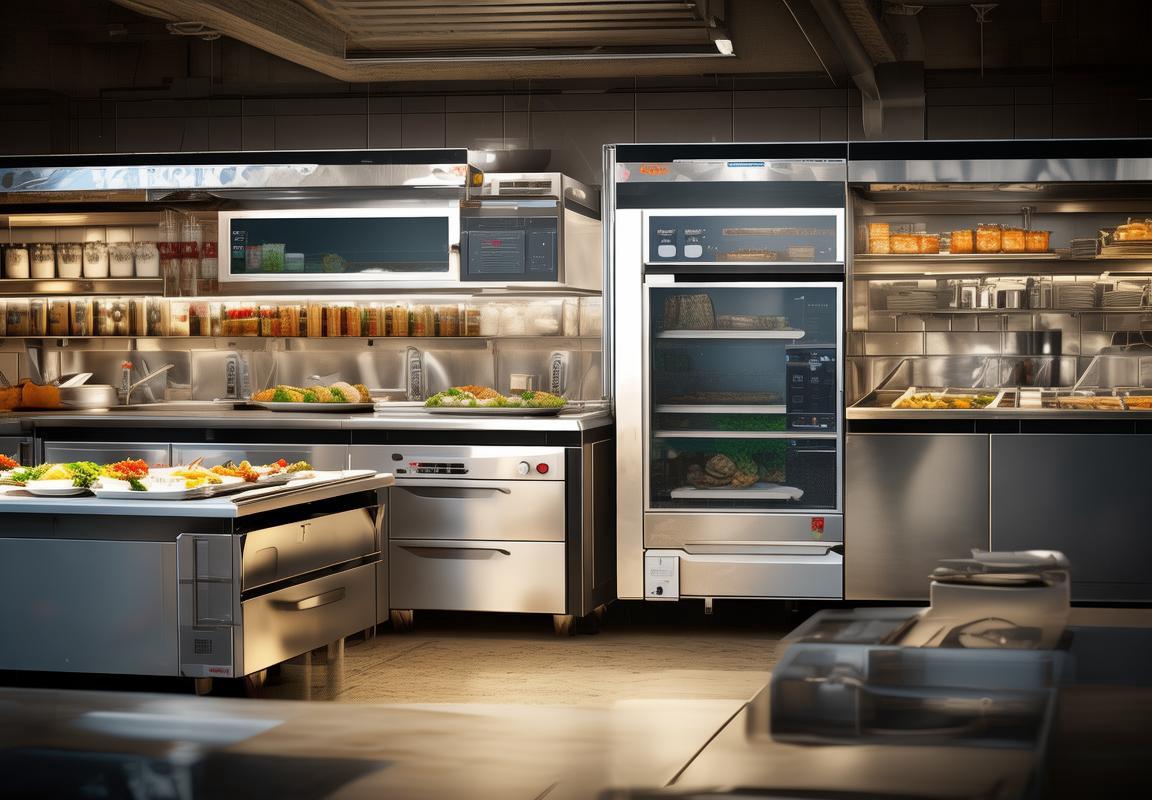
Market Overview: Current Trends in Kitchen Appliances in Europe and the USA
In recent years, the kitchen appliance market in both Europe and the USA has undergone significant transformations, reflecting shifting consumer preferences, technological advancements, and environmental concerns. The landscape is marked by a blend of innovation and sustainability, with a growing emphasis on smart features, energy efficiency, and user experience.
Smart appliances are becoming increasingly popular, as consumers seek convenience and connectivity. Smart ovens, refrigerators, and dishwashers equipped with internet connectivity and voice command capabilities are leading the charge, allowing users to control their kitchen devices remotely through smartphones and smart home systems. This trend is particularly pronounced in urban areas, where compact living spaces and busy lifestyles are driving the demand for smart solutions.
Energy efficiency remains a cornerstone of the market, with both regions seeing a surge in the adoption of appliances with high energy ratings. Europe, with its stringent energy-saving regulations, has led the way in certifying appliances that consume less energy while maintaining functionality. The USA, though less stringent in its regulations, is catching up, with consumers increasingly looking for Energy Star-rated products that promise energy savings and environmental benefits.
In Europe, the kitchen appliance market is also witnessing a shift towards modular and customizable products. Brands are offering consumers the flexibility to mix and match different components to create a kitchen that suits their individual needs and tastes. This trend is driven by the desire for personalization and the growing preference for open-concept kitchens that blend cooking, dining, and social spaces.
On the other side of the Atlantic, the US market is characterized by a strong focus on innovation. From countertop induction cooktops to air fryers and instant pots, American consumers are embracing a variety of new cooking technologies. These gadgets not only promise faster cooking times but also offer healthier alternatives to traditional cooking methods.
Another notable trend in both Europe and the USA is the rise of eco-friendly appliances. As consumers become more environmentally conscious, there’s a growing interest in appliances made from sustainable materials and those that are designed for longevity. Brands are responding by offering products that are easier to recycle at the end of their life, or those that can be repaired and maintained to extend their lifespan.
The integration of kitchen appliances with home automation systems is also gaining traction. Smart kitchen islands, which can serve as a hub for multiple appliances, are becoming a centerpiece in many modern kitchens. These islands often include built-in smart refrigerators, ovens, and sinks, all connected to a single control panel or mobile app.
In the realm of cooking appliances, professional-grade ranges and cooktops are becoming more accessible to the average consumer. The demand for high-end kitchen equipment that mimics restaurant-quality cooking is on the rise, driven by a passion for gourmet cooking and culinary experimentation.
The European and American kitchen appliance markets are also seeing a rise in health and wellness-oriented appliances. From sous-vide machines that ensure even cooking and food preservation to air purifiers and water filtration systems, these products cater to the growing need for healthier living environments.
The market is also being influenced by demographic changes. In Europe, the aging population is leading to a greater demand for easy-to-use appliances with features like programmable settings and automated controls. In the USA, the trend towards single-parent households and dual-income families is leading to a demand for time-saving appliances that can handle large loads efficiently.
In conclusion, the kitchen appliance market in Europe and the USA is dynamic, with a focus on smart technology, energy efficiency, and sustainability. Consumers are looking for appliances that not only enhance their cooking experience but also contribute to a healthier and more convenient lifestyle. As the market continues to evolve, it will be interesting to see how these trends shape the future of kitchen design and innovation.
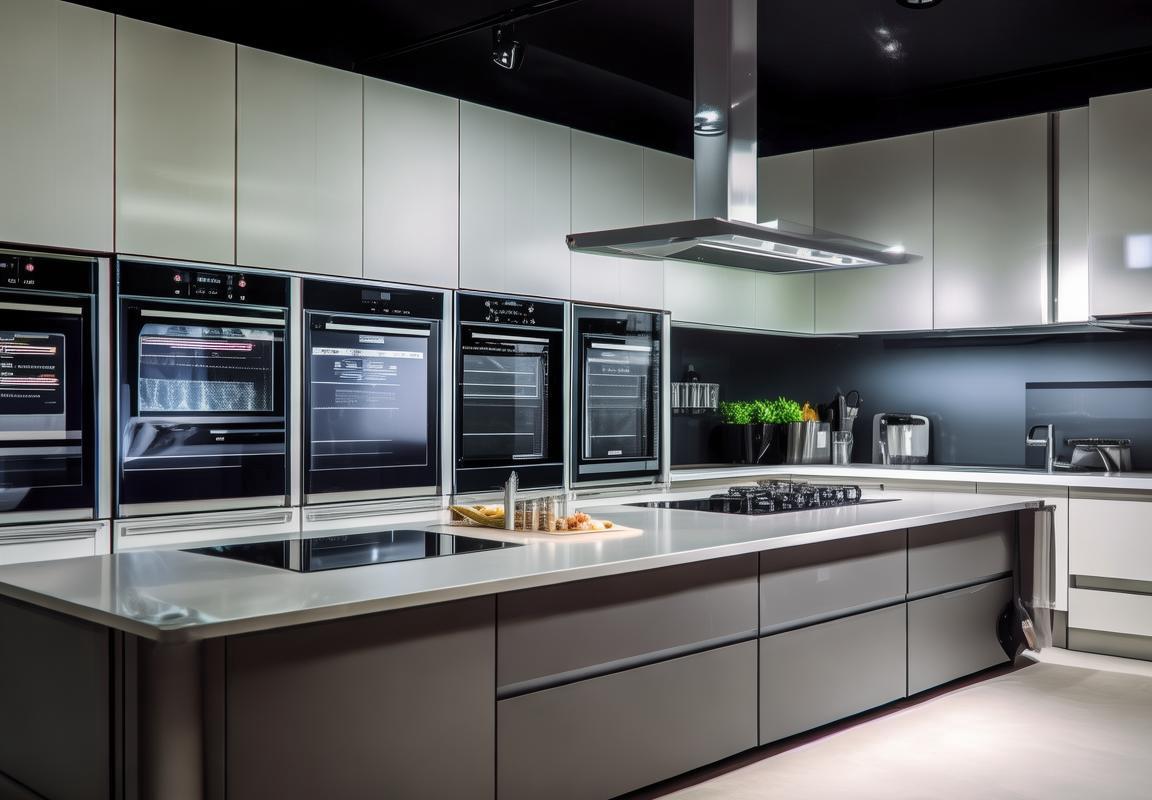
ETL Listed Commercial Units: A Brief Explanation of the Certification
ETL Listed Commercial Units are a significant aspect of the kitchen appliance industry, particularly in Europe and the USA, where safety and quality are paramount. Here’s a closer look at what the certification entails and why it holds such importance.
The ETL mark, which stands for “Electrical Testing Laboratories,” is a symbol of compliance with a wide range of safety standards. When a kitchen appliance carries the ETL Listed mark, it means that it has been rigorously tested by an independent, accredited testing laboratory. This process ensures that the appliance meets or exceeds the necessary safety, performance, and efficiency standards set by regulatory bodies.
One of the key aspects of the ETL certification is its comprehensive nature. It covers a broad spectrum of electrical, mechanical, and other safety requirements. This includes testing for electrical shock, fire hazards, and the structural integrity of the appliance. By undergoing these tests, manufacturers can gain assurance that their products are not only safe for consumers but also reliable and efficient.
In the European and American markets, the ETL certification is often seen as a benchmark for quality. It is recognized by both regulatory authorities and consumers as a sign of a product’s compliance with the latest safety standards. This recognition is crucial in a competitive market where trust and safety are top priorities.
The certification process for ETL Listed Commercial Units involves several stages. First, the manufacturer submits the appliance for initial testing. This can include performance tests, material safety assessments, and compliance with specific regulations. Once the initial tests are completed, the appliance is reviewed by the certification body to ensure it meets all necessary criteria.
After the review, the appliance is subject to follow-up inspections. These can be random checks or scheduled visits to the manufacturing facility to ensure that the production process adheres to the standards set forth by ETL. This ongoing surveillance helps to maintain the integrity of the ETL mark and ensures that products remain safe and effective throughout their lifecycle.
The ETL certification process also involves a significant amount of documentation. Manufacturers must provide detailed technical files, including design drawings, material specifications, and manufacturing procedures. This ensures that the appliance is not only safe but also built to last and performs as intended.
In the European Union, the ETL certification aligns with the European Standards (EN) and the harmonized standards (hEN) that are part of the New Approach and New Methods for Technical Harmonization. This alignment allows for easier market access across member states, as products with the ETL mark can often be sold without additional conformity assessments.
Similarly, in the United States, the ETL certification is recognized by organizations such as the Occupational Safety and Health Administration (OSHA) and the Consumer Product Safety Commission (CPSC). This recognition means that products with the ETL mark can be sold in the U.S. without the need for separate certifications, simplifying the entry into this vast market.
The ETL Listed mark also plays a role in consumer confidence. In the wake of recent recalls and safety concerns with certain kitchen appliances, having the ETL mark can be a significant selling point. Consumers are more likely to purchase a product that has been independently verified as safe and reliable.
For manufacturers, the ETL certification can be a strategic advantage. It differentiates their products from those that have not undergone such rigorous testing. This can be particularly beneficial in a market where consumers are increasingly concerned about the safety and sustainability of the products they buy.
In conclusion, the ETL Listed Commercial Units certification is a critical component of the kitchen appliance industry, particularly in Europe and the USA. It represents a commitment to safety, quality, and compliance with the highest standards. Whether it’s ensuring the structural integrity of a countertop oven or the electrical safety of a commercial range, the ETL mark is a symbol of trust and reliability that can make a significant difference in the competitive landscape of the kitchen appliance market.
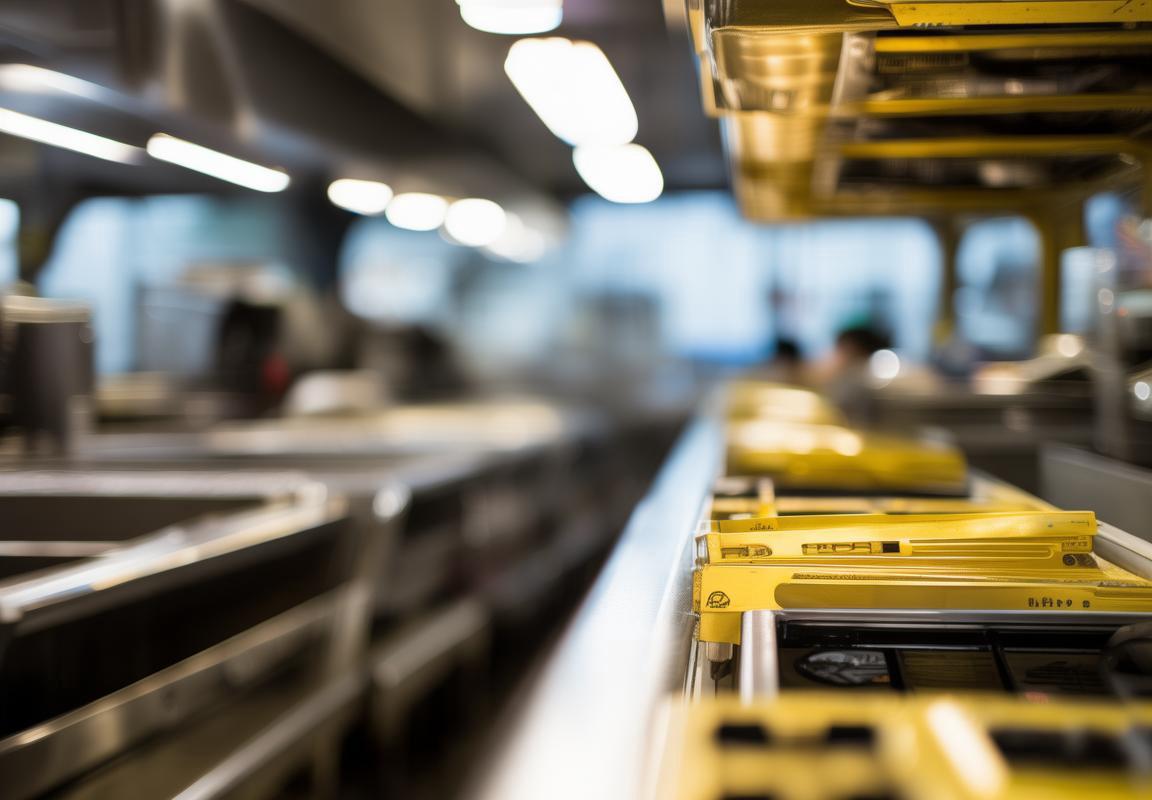
Consumer Preferences: Key Factors Influencing ETL Certified Kitchen Appliances
In the competitive landscape of kitchen appliances, consumer preferences play a pivotal role in shaping the market trends. ETL certified kitchen appliances, in particular, have gained significant attention due to their adherence to stringent safety and quality standards. Several key factors influence the choice of these appliances among consumers:
Energy Efficiency: With rising environmental concerns and the increasing cost of electricity, consumers are gravitating towards energy-efficient appliances. ETL certification often indicates that these products meet or exceed energy-saving criteria, making them an attractive option for eco-conscious buyers.
Safety Standards: The primary concern for most consumers when purchasing kitchen appliances is safety. ETL certification ensures that the appliances meet rigorous safety protocols, including electrical, mechanical, and fire safety standards. This assurance is particularly important for families with young children, as it provides peace of mind.
Brand Reputation: Consumers tend to trust brands that have a strong reputation for quality and reliability. ETL certification is recognized globally, which adds to the credibility of the brand. When appliances bear the ETL mark, it signals to consumers that the manufacturer has passed a thorough evaluation process.
Ease of Use: Modern consumers are looking for appliances that not only meet safety and efficiency standards but also offer ease of use. Features like intuitive interfaces, touch controls, and smart technology integration are becoming increasingly important. ETL certified appliances often incorporate these user-friendly elements.
Design and Style: Aesthetics are not just about looks; they also reflect the personal style and preference of the consumer. ETL certified appliances are known for their sleek designs and modern aesthetics, which can enhance the overall look of a kitchen. Consumers are willing to invest in appliances that not only perform well but also add to the kitchen’s ambiance.
Durability and Longevity: The longevity of kitchen appliances is a significant factor in consumer decision-making. ETL certification often includes assessments of the appliance’s durability, ensuring that it can withstand regular use and maintain its performance over time. This longevity factor is crucial for consumers who want to make a long-term investment.
Warranty and Customer Service: The inclusion of a comprehensive warranty and excellent customer service is another key factor influencing consumer preferences. ETL certified appliances typically come with robust warranties, providing consumers with added protection and support. Brands that offer reliable customer service are more likely to retain customer loyalty.
Smart Technology Integration: As technology advances, consumers are increasingly interested in smart kitchen appliances that can be controlled remotely or integrated with other smart home systems. ETL certification can extend to these smart features, ensuring that the technology is safe, reliable, and user-friendly.
Health and Wellness: There’s a growing trend among consumers to prioritize health and wellness in their daily lives. This extends to kitchen appliances, with an increasing demand for products that are easy to clean, have non-toxic materials, and can contribute to a healthier cooking environment. ETL certification often addresses these concerns.
Cost-Effectiveness: Despite the premium price tag of ETL certified appliances, many consumers find them cost-effective in the long run due to their energy savings, durability, and reliability. The initial investment is often outweighed by the savings on energy bills and the reduced need for repairs or replacements.
In conclusion, consumer preferences for ETL certified kitchen appliances are influenced by a combination of factors, including energy efficiency, safety, brand reputation, ease of use, design, durability, warranty, smart technology, health considerations, and cost-effectiveness. These factors collectively contribute to the growing popularity of ETL certified products in the kitchen appliance market.

Market Dynamics: Growth Drivers and Challenges
In the dynamic landscape of the kitchen appliance market, several factors are at play, shaping the growth and presenting challenges for manufacturers and consumers alike. Here’s an in-depth look at the key drivers and challenges:
The rise of smart appliances has been a significant growth driver. These devices, equipped with advanced technology, offer users convenience, efficiency, and connectivity. Smart kitchen appliances can be controlled remotely, providing users with the ability to monitor and manage their appliances from anywhere, which is particularly appealing in today’s fast-paced world.
Energy efficiency remains a crucial factor. With environmental concerns on the rise, consumers are increasingly seeking appliances that not only perform well but also do so with minimal energy consumption. This trend has spurred innovation in energy-saving technologies, leading to the development of more sustainable kitchen appliances.
E-commerce has revolutionized the way consumers purchase kitchen appliances. Online shopping has made it easier for consumers to compare products, read reviews, and make informed decisions. This shift has also opened up new markets for manufacturers, allowing them to reach a broader audience.
The integration of kitchen appliances with home automation systems is another driver of market growth. As homes become smarter, there’s a growing demand for appliances that can be integrated seamlessly into these systems, offering a cohesive and efficient living environment.
On the flip side, the market faces challenges. One of the most significant is the rapid pace of technological change. Manufacturers must continuously innovate to keep up with evolving consumer needs and preferences. This can be costly and requires a substantial investment in research and development.
Regulatory compliance is another challenge. Different countries have varying standards and certifications for kitchen appliances, which can be complex and time-consuming to navigate. Ensuring that products meet all necessary regulations is a critical concern for manufacturers, especially those looking to expand into new markets.
The rise of eco-friendly materials and practices is also presenting challenges. While consumers are increasingly interested in sustainable appliances, the availability and cost of eco-friendly components can be limiting. Balancing environmental responsibility with affordability is a delicate task for manufacturers.
Moreover, the global supply chain has been strained by various factors, including trade disputes and the COVID-19 pandemic. These disruptions have impacted production timelines, increased costs, and led to shortages in certain components, all of which can hinder market growth.
Consumer behavior is also changing, with a growing number of consumers valuing durability over price. This shift requires manufacturers to produce appliances that are not only affordable but also built to last, which can be a challenge for companies that may be more focused on short-term gains.
Lastly, the competitive landscape is fierce. With numerous players in the market, manufacturers must differentiate their products to stand out. This often involves investing in marketing and branding, which can be a significant financial burden.
In conclusion, while the kitchen appliance market is experiencing growth due to factors like smart technology, energy efficiency, and e-commerce, it also faces challenges such as rapid technological advancements, regulatory compliance, and supply chain disruptions. Navigating these dynamics will be crucial for manufacturers looking to thrive in this evolving industry.
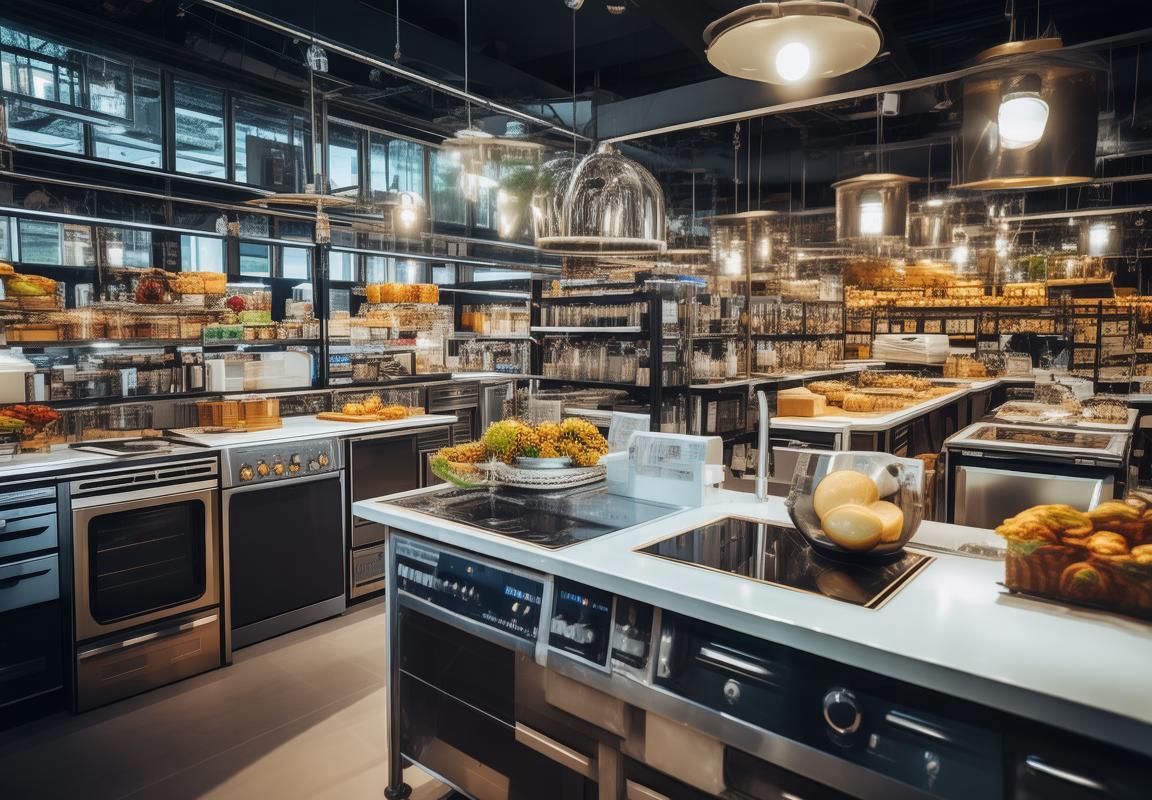
Innovation in ETL Certified Kitchen Appliances
In recent years, the kitchen appliance market has witnessed a surge in innovation, particularly within the realm of ETL (Electrical Testing Laboratories) certified products. These appliances, known for their safety and quality, have been at the forefront of technological advancements. Here’s a closer look at some of the key areas where innovation is thriving in ETL certified kitchen appliances.
The integration of smart technology has revolutionized the way we interact with kitchen appliances. ETL certified devices now come equipped with features like voice control, Wi-Fi connectivity, and mobile app integration. This allows users to monitor and control their appliances remotely, making cooking more convenient and efficient.
Energy efficiency remains a cornerstone of innovation in ETL certified kitchen appliances. Manufacturers are constantly pushing the boundaries to create appliances that consume less energy while still maintaining high performance. Features like LED lighting, programmable timers, and energy-saving modes are becoming standard, helping consumers reduce their utility bills.
Safety is paramount in kitchen appliances, and ETL certification ensures that these products meet stringent safety standards. However, innovation in this area extends beyond mere compliance. Appliance manufacturers are now incorporating features like child locks, automatic shut-off mechanisms, and non-slip surfaces to prevent accidents and enhance user safety.
The rise of modular and compact kitchen appliances has been driven by the increasing demand for space-saving solutions. ETL certified appliances like countertop ovens, compact dishwashers, and mini-fridges are designed to fit seamlessly into smaller kitchens or as part of multifunctional kitchen layouts. These innovations cater to urban lifestyles and the growing preference for minimalist design.
Sustainability is another critical area where ETL certified kitchen appliances are leading the charge. Eco-friendly materials, recyclable components, and appliances designed for longevity are becoming more prevalent. Features like water-efficient dishwashers and energy-efficient refrigerators not only help reduce environmental impact but also align with consumer values.
Personalization is also shaping the landscape of kitchen appliance innovation. Smart appliances can learn from user habits and adjust settings accordingly. This level of customization ensures that each appliance caters to the specific needs and preferences of its user, offering a more tailored cooking experience.
Health and wellness have become significant factors in the design of kitchen appliances. ETL certified appliances now include features that promote healthier cooking, such as steam ovens that reduce the need for oil and fat, air fryers that provide a healthier alternative to deep-frying, and refrigerators with filters that remove contaminants from water.
Appliance manufacturers are also focusing on the aesthetics of their products. Modern kitchen appliances are not just functional but also stylish. ETL certified appliances come in a variety of colors and finishes, and some even offer customizable panels to match the kitchen’s decor.
The integration of artificial intelligence (AI) is another area of innovation. AI-powered appliances can analyze cooking times and temperatures, providing users with tailored recipes and cooking suggestions. This technology is particularly beneficial for those new to cooking or looking to expand their culinary skills.
Energy recovery systems are being implemented in certain ETL certified kitchen appliances to reduce waste and save energy. For example, dishwashers are being designed to capture the heat from the drying cycle and use it to preheat the next load of dishes.
Lastly, the rise of smart home ecosystems has spurred innovation in ETL certified kitchen appliances. These appliances can now be controlled through a single interface, allowing users to manage all their smart home devices with ease.
In conclusion, innovation in ETL certified kitchen appliances is driven by a multitude of factors, including technological advancements, consumer demands, and environmental concerns. As these appliances continue to evolve, they are not only becoming more efficient and safe but also more personalized and integrated into our daily lives.
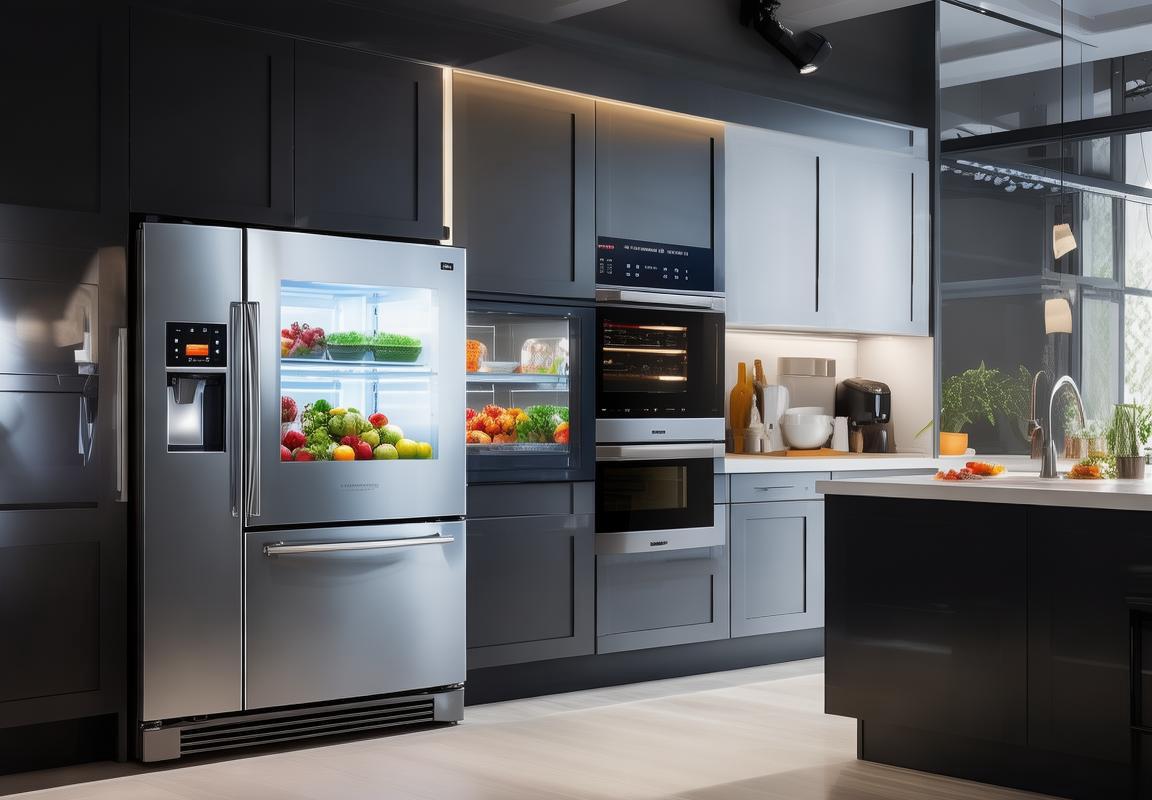
Case Studies: Successful ETL Certified Products in the Market
In the competitive landscape of kitchen appliances, several products have emerged as successful examples of ETL certification. These case studies highlight not just the adherence to safety standards but also the innovative features and market appeal that have propelled them to the forefront.
The Smart Oven Revolution: A Culinary Game-ChangerThe Smart Oven, a high-end kitchen appliance, has become a hit in the market due to its ETL certification and cutting-edge technology. This oven not only meets the stringent safety requirements but also offers smart features like AI-powered cooking modes and wireless connectivity, making it a favorite among tech-savvy consumers.
Energy Efficiency at Its Peak: The Eco-Friendly RefrigeratorEco-Friendly Refrigerator has set a new benchmark in the market with its ETL certification. This refrigerator is not only designed to reduce energy consumption but also boasts of advanced cooling technology that preserves the freshness of food for longer periods. Its sleek design and eco-friendly materials have resonated with environmentally conscious consumers.
Sleek and Secure: The ETL Certified Smart FridgeThe Smart Fridge has become a staple in modern kitchens, thanks to its ETL certification and user-friendly design. With its integrated touch screen interface and smart storage solutions, it has managed to blend form and function seamlessly. The fridge’s advanced security features, including Wi-Fi capabilities and biometric locking systems, have made it a standout product among safety-conscious shoppers.
The All-in-One Cooking Appliance: A Multi-Functional MarvelThe Multi-Functional Cooking Appliance, another ETL-certified product, has captured the imagination of consumers with its versatility. This single appliance can perform various cooking tasks, from baking to roasting, to grilling, making it a space-saving and time-efficient solution for busy homeowners. Its intuitive controls and durable construction have contributed to its success.
The Healthy Kitchen Companion: The ETL Certified JuicerFor those who prioritize health and wellness, the ETL Certified Juicer has become a must-have. This juicer, known for its ability to extract the most nutrients from fruits and vegetables, has gained popularity due to its high performance and durability. The sleek design and easy-to-clean features have made it a favorite among health enthusiasts.
The Industrial-Grade Blender: Perfect for the Professional ChefIn the commercial kitchen sector, the Industrial-Grade Blender has made a significant impact with its ETL certification. Known for its robust build and powerful motor, this blender is a favorite among chefs and restaurateurs. Its ability to handle large quantities of ingredients efficiently has made it a go-to appliance for high-volume food preparation.
The Compact Coffee Maker: A Keurig Clone with ETL ApprovalCoffee lovers have found a new favorite in the Compact Coffee Maker, an ETL-certified clone of the popular Keurig brand. This compact and affordable coffee maker offers the convenience of single-serve coffee pods without the premium price tag. Its reliability and ease of use have made it a staple in homes and offices alike.
The Robust Range Cooktop: Versatility for Every ChefFor those who prefer cooking on a traditional stove, the Robust Range Cooktop, an ETL-certified product, stands out for its durability and performance. With multiple burners that offer precise temperature control, this cooktop is a favorite among chefs looking for an appliance that can handle a wide range of cooking techniques.
The Modern Kitchen Sink: A Hygienic EssentialThe Modern Kitchen Sink, with its ETL certification, has become a hygiene essential in modern kitchens. This sink is designed with seamless surfaces and durable materials that prevent bacteria growth. Its sleek design and built-in sink accessories, such as cutting boards and colanders, have made it a favorite among homeowners.
Each of these ETL-certified products has found its niche in the market, thanks to a combination of safety, innovation, and consumer demand. Their success stories serve as a testament to the power of adherence to rigorous safety standards and the importance of meeting the evolving needs of consumers.
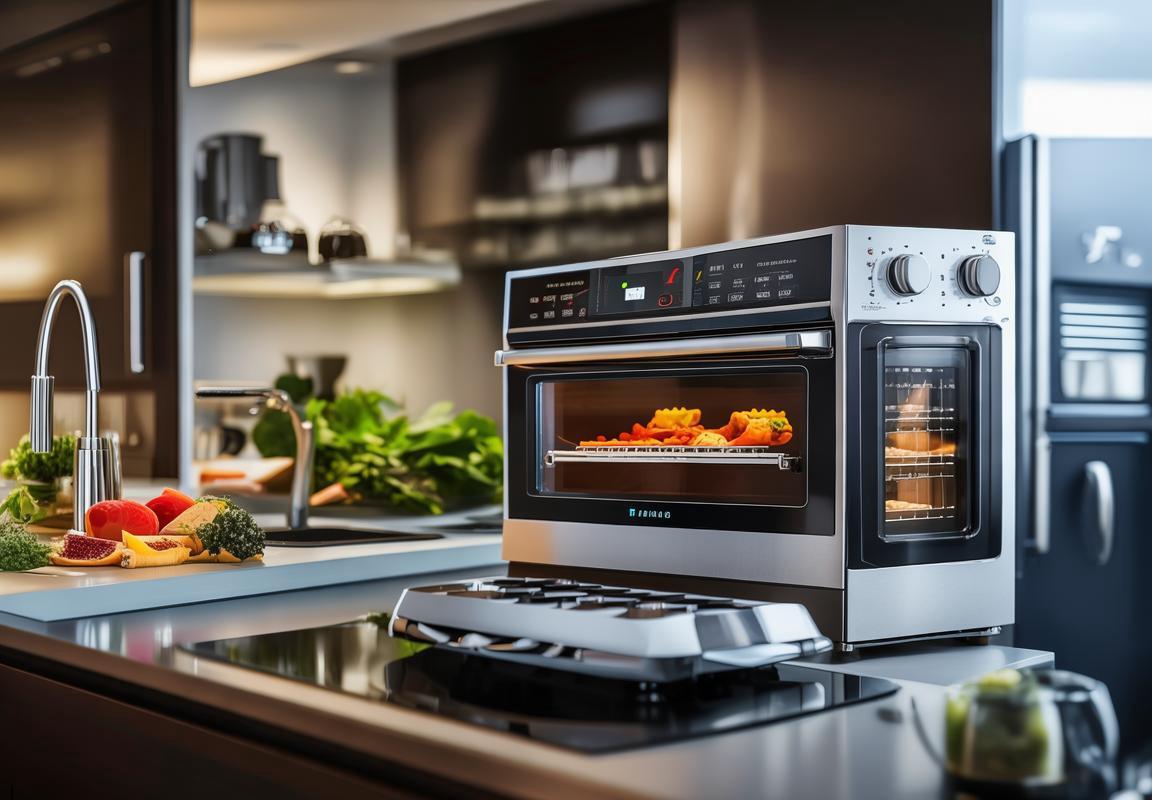
Regulatory Environment: Compliance and Certification Implications
In today’s interconnected global market, the regulatory environment plays a pivotal role in shaping the landscape of various industries, including kitchen appliances. Compliance with international standards and certifications like ETL (Electrical Testing Laboratories) is not just a legal requirement but also a trust signal to consumers. Let’s delve into the compliance aspects and the implications of certification in the kitchen appliance sector.
The ETL certification process involves rigorous testing and evaluation to ensure that kitchen appliances meet specific safety and performance criteria. This process is critical as it addresses potential hazards such as electrical, fire, and mechanical risks. Compliance with these standards is not just about adhering to legal requirements but also about upholding a certain level of quality and safety that consumers have come to expect.
One significant implication of ETL certification is the ability to access broader markets. In many regions, including the United States and Canada, ETL certification is often a prerequisite for selling kitchen appliances. This certification serves as a testament to the product’s quality and safety, making it easier for manufacturers to enter new markets without the burden of additional compliance assessments.
The regulatory environment also influences the design and manufacturing processes of kitchen appliances. Companies that seek ETL certification must incorporate safety features and materials that meet or exceed the required standards. This often leads to innovations in materials science, design, and engineering, as manufacturers strive to meet the stringent criteria set by ETL.
Moreover, the compliance landscape is dynamic, with regulations and standards constantly evolving. For instance, as energy efficiency becomes a more pressing global concern, manufacturers are under pressure to produce appliances that are not only safe but also environmentally friendly. This shift in focus has led to the development of more energy-efficient models that still maintain the ETL certification.
The implications of ETL certification on the regulatory environment are multifaceted. For consumers, it provides peace of mind that the appliances they purchase have been tested for safety. For manufacturers, it opens doors to new markets and customers who prioritize certified products. However, for regulatory bodies, maintaining the integrity of the certification process is crucial.
Regulatory bodies must ensure that the certification process remains unbiased and thorough. This involves regular audits and updates to the testing procedures to keep pace with technological advancements and emerging safety concerns. The certification bodies must also be vigilant about counterfeit certifications, which can undermine the credibility of the entire system.
In the kitchen appliance industry, compliance and certification also have financial implications. While obtaining an ETL certification can be a significant upfront investment, it often leads to long-term benefits such as increased sales and market share. The cost of non-compliance, on the other hand, can be much higher, including potential fines, recall costs, and reputational damage.
Furthermore, the regulatory environment impacts the supply chain. Manufacturers must work closely with their suppliers to ensure that all components and materials meet ETL standards. This can sometimes lead to higher costs and longer lead times, but it also fosters a culture of quality and safety throughout the industry.
As the world becomes more interconnected, the implications of compliance and certification extend beyond national borders. International agreements and treaties often recognize the equivalence of certain certifications, making it easier for manufacturers to export their products globally. This recognition not only simplifies the certification process but also encourages international cooperation and standardization.
In conclusion, the regulatory environment and the certification process, such as ETL, have profound implications for the kitchen appliance industry. Compliance not only ensures safety and quality but also opens doors to new markets and fosters innovation. The dynamic nature of regulations requires constant vigilance and adaptation from both manufacturers and regulatory bodies to maintain the integrity of the certification process and the trust of consumers.

Future Outlook: Predictions for ETL Certified Commercial Units
The landscape of kitchen appliances is continually evolving, and ETL certified commercial units are at the forefront of this transformation. As technology advances and consumer demands shift, the future of these units appears to be promising yet fraught with challenges. Here’s a glimpse into the predicted future of ETL certified commercial units.
Energy Efficiency and SustainabilityWith growing environmental concerns, energy efficiency has become a cornerstone in the appliance industry. ETL certification often emphasizes energy-saving features, and it’s expected that this trend will intensify. As consumers and businesses alike seek more sustainable solutions, ETL certified units that are energy-efficient and environmentally friendly will likely see increased demand.
Smart Technology IntegrationThe integration of smart technology in kitchen appliances is another area poised for significant growth. ETL certified units that offer connectivity, remote control, and data analytics are expected to become more popular. This shift will not only enhance user convenience but also allow for better monitoring and maintenance of appliances, leading to improved performance and longevity.
Customization and PersonalizationAs the market becomes more competitive, there’s a trend towards customization and personalization. ETL certified commercial units that can be tailored to specific needs, whether it’s in terms of size, features, or compatibility with other systems, are likely to gain a competitive edge. This could include appliances that can be programmed for specific cooking times, temperatures, and even dietary preferences.
Rising Standards of Safety and QualityThe ETL certification is already known for its rigorous safety standards, but there’s an ongoing push to raise the bar even further. As new safety regulations are introduced and old ones are updated, ETL certified units will need to meet these higher standards to maintain their credibility. This could lead to more advanced safety features, such as improved child safety locks and advanced fire prevention systems.
Global ExpansionThe demand for ETL certified commercial units is not limited to North America. As the certification gains recognition internationally, there will be opportunities for expansion into new markets. This global expansion will require ETL certified units to adapt to various local regulations and consumer preferences, which could lead to innovative solutions that cater to diverse needs.
Economic Shifts and Consumer BehaviorEconomic fluctuations and changes in consumer behavior can significantly impact the market for ETL certified commercial units. For instance, during economic downturns, there may be a shift towards more budget-friendly options, while in times of economic growth, consumers might be willing to invest in premium appliances. Adapting to these changes will be crucial for manufacturers to maintain their market share.
Technological AdvancementsTechnological advancements, such as the rise of 3D printing and modular design, could revolutionize the way kitchen appliances are manufactured. ETL certified units that leverage these technologies may offer greater flexibility, faster production times, and the ability to create highly customized products. This could also lead to a reduction in waste and a more sustainable approach to appliance manufacturing.
Increased Focus on Health and WellnessThe health and wellness trend is influencing kitchen appliance design and functionality. ETL certified units that offer features that promote healthier cooking methods, such as steam ovens and air fryers, are likely to become more popular. Additionally, appliances that provide information on nutritional content and cooking times may appeal to health-conscious consumers.
Competitive LandscapeThe competitive landscape for ETL certified commercial units is expected to become even more intense. As more companies seek to gain a foothold in the market, there will be a drive to innovate and differentiate products. This competition may lead to a proliferation of new features and technologies, as well as strategic partnerships and collaborations.
Regulatory Compliance and StandardsMaintaining compliance with various regulatory standards is a challenge for manufacturers of ETL certified commercial units. As new regulations are introduced and existing ones are updated, companies will need to invest in research and development to ensure their products meet the latest requirements. This continuous compliance process is crucial for the long-term success of ETL certified units.
In conclusion, the future of ETL certified commercial units is multifaceted, with opportunities for growth and innovation alongside challenges related to compliance, technology, and market dynamics. As the industry evolves, it will be essential for manufacturers to stay ahead of trends and adapt to changing consumer needs and expectations.
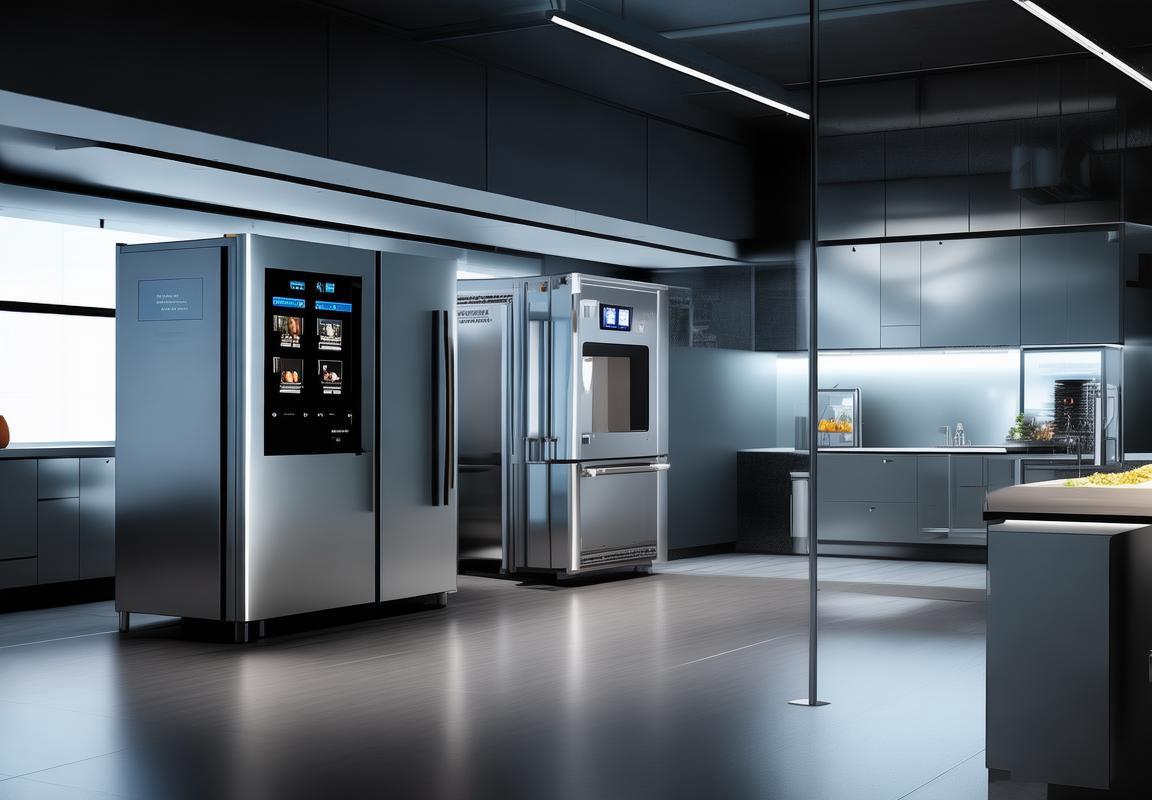
Conclusion: The Role of ETL Certification in the Global Kitchen Appliance Industry
In the ever-evolving landscape of the global kitchen appliance industry, ETL certification plays a pivotal role in ensuring product safety, compliance, and quality. As we reflect on the current state of this industry, it becomes clear that ETL certification is not just a regulatory checkbox but a symbol of trust and reliability for consumers and businesses alike. This conclusion aims to encapsulate the significance of ETL certification, its impact on the market, and its potential future trajectory.
The ETL certification mark is recognized worldwide, serving as a benchmark for excellence in product safety and performance. It signifies that a product has been rigorously tested and meets the stringent standards set by Intertek, the company that administers the ETL program. This recognition is crucial in an industry where consumer confidence is paramount, and the stakes are high due to the potential risks associated with kitchen appliances.
As consumers become more health-conscious and environmentally aware, the demand for energy-efficient and sustainable kitchen appliances is on the rise. ETL certified products often boast features that align with these values, such as energy-saving modes and recyclable materials. This alignment with consumer preferences has led to a growing market segment for ETL certified appliances.
The integration of smart technology into kitchen appliances has also been a significant trend. ETL certification ensures that these smart devices are not only functional but also secure against cyber threats. The ability to connect kitchen appliances to home automation systems is becoming increasingly popular, and ETL certification helps to assure consumers that their data and devices are protected.
From a regulatory standpoint, the kitchen appliance industry faces strict guidelines and standards. ETL certification helps manufacturers navigate these complexities by providing a clear path to compliance. This certification is particularly important in regions with stringent safety regulations, such as the United States and Canada, where ETL is often a requirement for market entry.
Despite the many benefits of ETL certification, the industry faces challenges. One significant challenge is the cost associated with certification processes. This can be a barrier for smaller manufacturers who may not have the resources to invest in the certification process. However, the long-term benefits of certification, such as increased marketability and customer trust, often outweigh the initial investment.
Another challenge is the rapid pace of technological advancements. As new technologies emerge, the criteria for ETL certification must evolve to keep pace. This requires ongoing collaboration between certifying bodies, manufacturers, and regulatory agencies to ensure that the latest safety standards are being met.
Looking ahead, the future of ETL certified commercial units appears promising. With the increasing importance of sustainability and energy efficiency, we can expect to see a surge in ETL certified appliances that are designed to reduce the environmental footprint. The rise of the gig economy and remote work has also highlighted the need for compact, multi-functional kitchen appliances, which are likely to be ETL certified to meet safety and quality standards.
The integration of artificial intelligence and the Internet of Things (IoT) into kitchen appliances is another area poised for growth. ETL certification will be essential in ensuring that these connected devices are secure and reliable. As consumers become more tech-savvy, they will demand appliances that offer advanced features without compromising on safety.
In conclusion, ETL certification serves as a cornerstone of trust in the global kitchen appliance industry. It not only ensures that products meet the highest safety and quality standards but also aligns with the evolving demands of consumers and the regulatory landscape. As the industry continues to innovate and adapt, ETL certification will remain a vital tool for manufacturers looking to gain a competitive edge and for consumers seeking peace of mind.